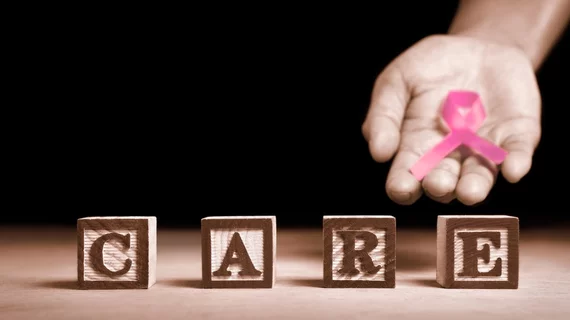Ultrasound should be 1st imaging test to analyze lumps after mastectomy
Targeted breast ultrasound should be the first-line imaging test in patients with palpable lumps after mastectomy, according to a recent study published in the American Journal of Roentgenology.
Following mastectomy, primary or recurrent breast cancer often appears as a tangible lump, but there is little direction for clinicians on imaging such findings, according to lead author Brittany Z. Dashevsky, MD, of the Division of breast imaging, University of California, San Francisco, and colleagues.
“Currently, there is a lack of data about the role of mammography and breast ultrasound to evaluate a palpable lump in the postmastectomy breast,” the authors wrote. “Furthermore, there are no evidence-based guidelines for the imaging evaluation of a palpable lump in the mastectomy bed in contrast to well-established guidelines for the imaging evaluation of a palpable lump in the native breast.
In the retrospective study, the researchers analyzed 101 patients who presented for initial imaging evaluation of palpable lumps between January 2009 and December 2015, all had a history of prophylactic or therapeutic mastectomy. Patients were excluded if they had a known malignancy at imaging, if the lump was not at the mastectomy site, or if there was less than one year clinical or imaging follow-up in the absence of biopsy.
A total of 118 cases were included, all evaluated with ultrasound and 43 with mammography. Nine cancers were found in the 75 cases evaluated with only ultrasound and three cancers were identified when using both ultrasound and mammography.
Fourteen palpable lumps in 12 patients were malignant, with all except one case seen in patients with a history of therapeutic mastectomy for primary breast cancer. Additionally, 104 lumps in 89 patients were nonmalignant. Ultrasound produced a negative predictive value of 97% and a positive predictive value 2 of 27%.
While mammography did not find any additional cancers, it did help to confirm some cases.
“Mammography may be reserved for problem-solving for suspected benign palpable processes or for extent-of-disease evaluation,” the authors wrote. “ Although a few prior studies have evaluated the utility of mammography for evaluating asymptomatic autologous flap reconstructions, to our knowledge this study is the first to evaluate the utility of diagnostic imaging for evaluation of palpable lumps after mastectomy."
The study was limited by its small sample size, the authors noted, but overall they recommend ultrasound as the initial test for patients with palpable lumps following mastectomy.

